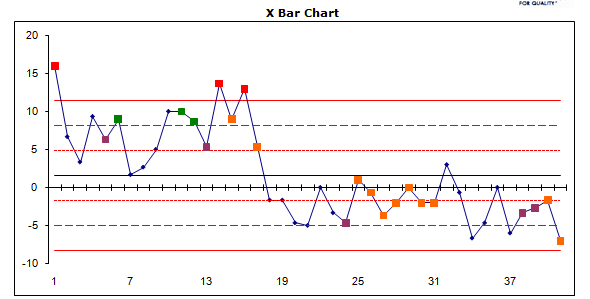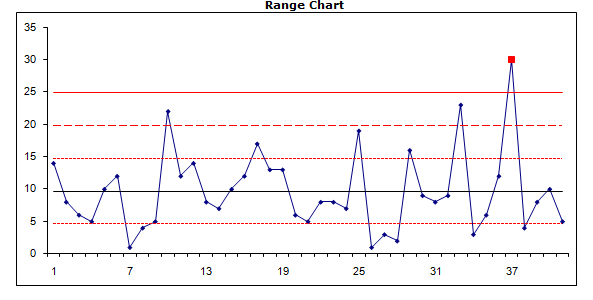Introduction
The process of executing control over the essential processes in the organization after the crucial changes of its QA Department is made will be required to maintain high-quality rates. Particularly, it will be necessary to make sure that the significance of customer satisfaction should be acknowledged by every single employee. In other words, the promotion of CSR is required.
Analysis
Particularly, the enhancement of the monitoring stage must be viewed as a necessity due to the dependence on the choices made by the QA team members in the process. Specifically, it is crucial that the employees should be aware of the quality standards that are applied to the aircraft industry currently. The increase in the employees’ competency rates is expected after the training session that will enable the staff members to engage in the process of independent learning (Kubiak & Benbow, 2009d).
The X Bar Chart, in its turn, points quite graphically to the fact that the introduction of Six Sigma and the iSixSigma concepts into the process of the company’s operations is likely to trigger impressive improvements.
Team A was selected to participate in an experiment during which they had to apply the Six-Sigma-related principles to the QA processes (Kubiak & Benbow, 2009b). Particularly, the first week required using the standard QA framework, and the Six Sigma concepts had to be used during the second one. As Fig. 1 shows, the improvement in the quality standards is impressive. However, Fig. 2 points quite graphically to the increase in the variability of the outcome, which means that the staff might lack motivation, support, or other important elements that make their performance less consistent (Kubiak & Benbow, 2009c).


Reference List
Kubiak, T. M., & Benbow, D. W. (2009a). Chapter 35: Statistical process control. In The Certified Six Sigma Black Belt handbook (2nd ed.) (pp. 357-399). Milwaukee, WI: ASQ.
Kubiak, T. M., & Benbow, D. W. (2009b). Chapter 36: Other control tools. In The Certified Six Sigma Black Belt handbook (2nd ed.) (pp. 400-402). Milwaukee, WI: ASQ.
Kubiak, T. M., & Benbow, D. W. (2009c). Chapter 37: Maintain controls. In The Certified Six Sigma Black Belt handbook (2nd ed.) (pp. 403-407). Milwaukee, WI: ASQ.
Kubiak, T. M., & Benbow, D. W. (2009d). Chapter 38: Sustained improvements. In The Certified Six Sigma Black Belt handbook (2nd ed.) (pp. 408-412). Milwaukee, WI: ASQ.